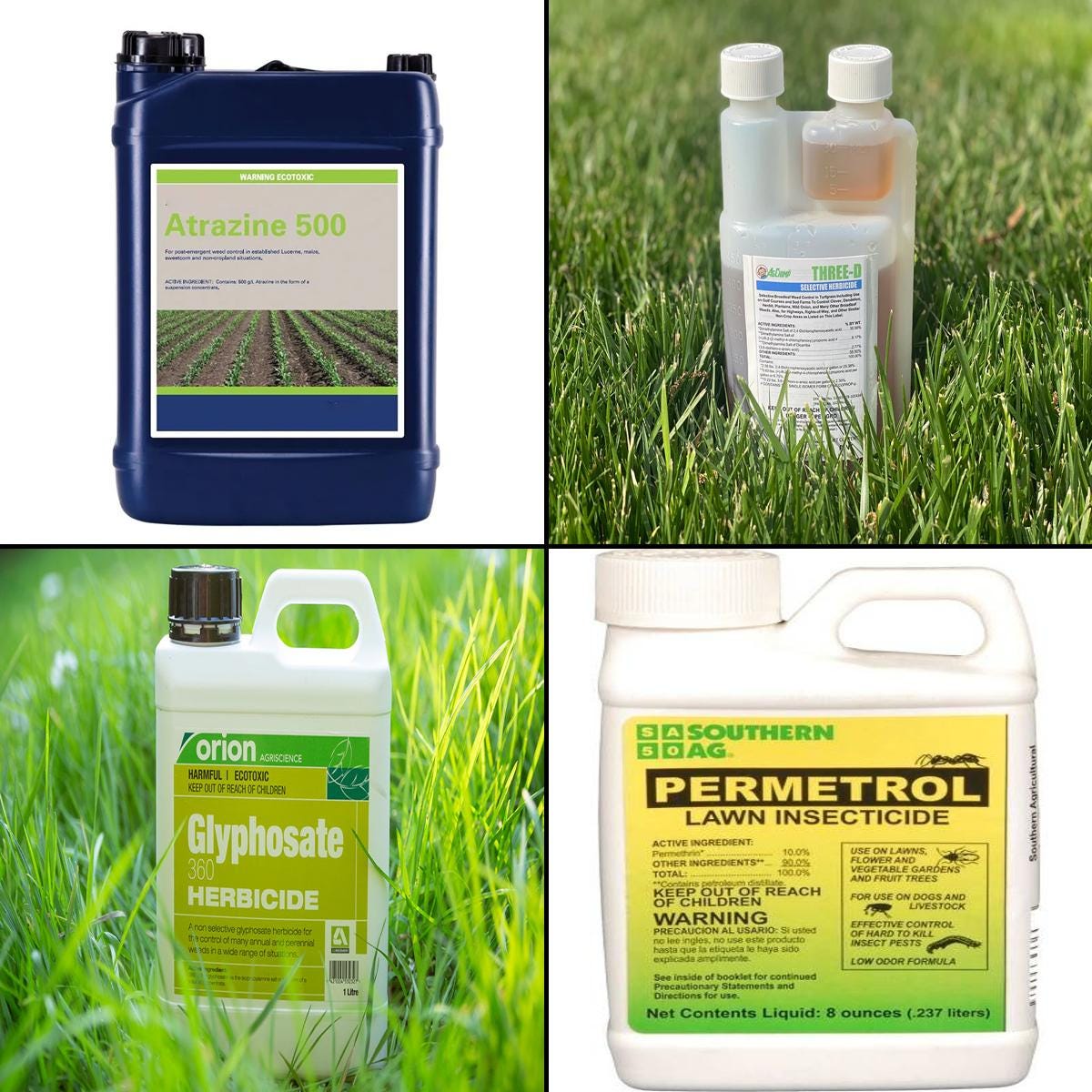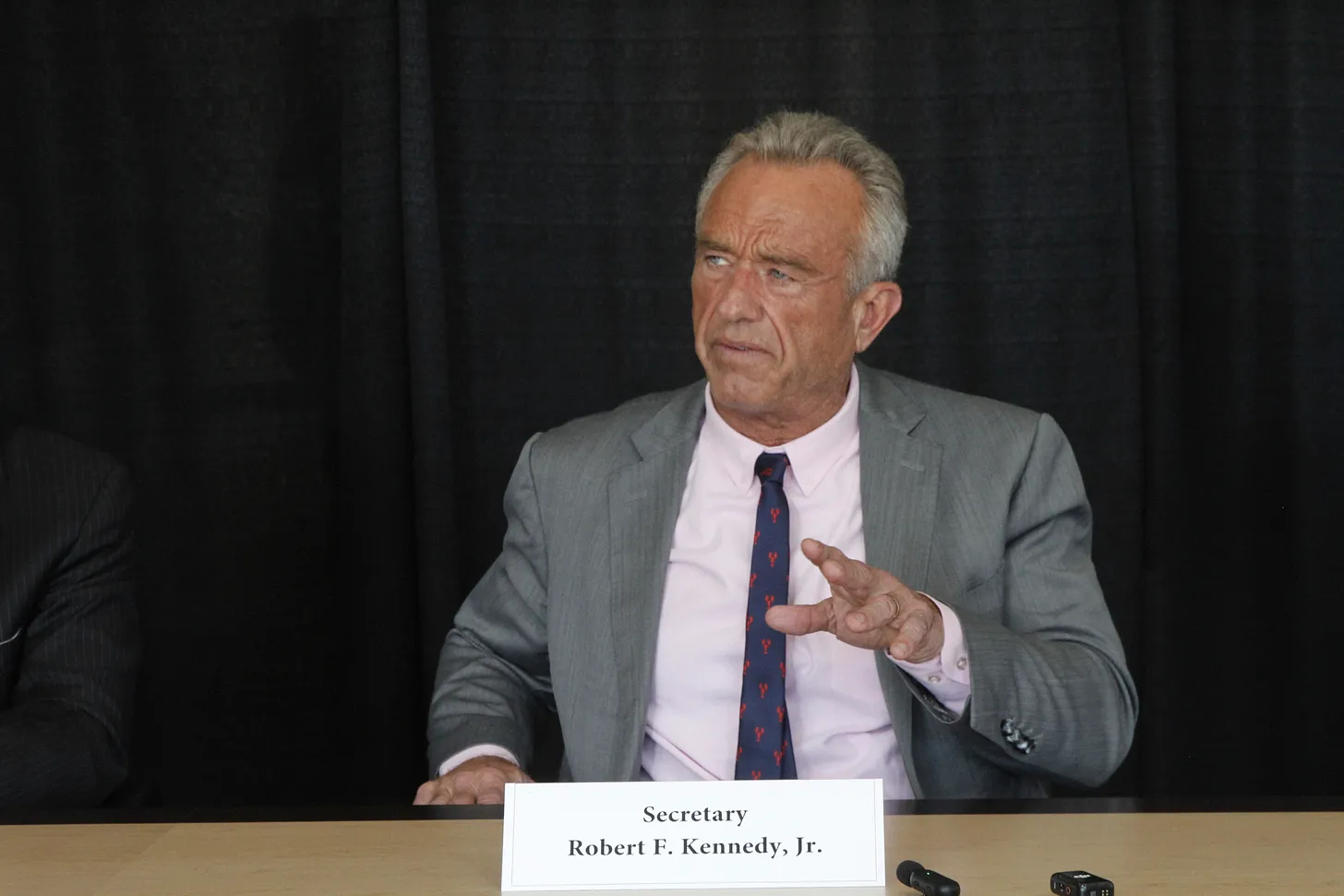
One of the most important goals of the President’s Make America Healthy Again Commission is to increase public awareness and knowledge of a broad swath of issues contributing to the health crisis in America.
The MAHA Report is a reader-supported publication. To receive new posts and support my work, consider becoming a free or paid subscriber.
In that spirit, I examine the dangers of pesticides, herbicides, and industrial chemicals – a subject gaining urgency as members of the House of Representatives prepare to vote on Appropriations bill 453, a terrible piece of legislation that the House will decide on September 2.
The situation is dire.
Toxic chemicals saturating our food, water, and air are fueling a surge in Parkinson’s, Alzheimer’s, and other neurodegenerative diseases, yet some lawmakers are trying to protect the companies responsible. This is a crisis we need to confront head-on.
Americans still have a few weeks to convince their representatives across the country that this bill is a bad idea which they can and should resist.
Supporters of the MAHA movement and Secretary of Health and Human Services Robert F. Kennedy Jr. ought to be especially incensed. If passed, the bill would grant pesticide and agrochemical manufacturers a liability shield – even though their products harm human health. Passing it would strip away one of the few tools people have to seek justice and force industry change.
This matters because we are already in the middle of a public health emergency, with neurodegenerative diseases rising at alarming rates. Mounting research links this surge to chronic, low-level exposure to pesticides, herbicides, and industrial chemicals.
In the U.S., the most common are Alzheimer’s and Parkinson’s disease, both of which are climbing at unprecedented speed. Parkinson’s has become the fastest-growing neurological disorder in the world, with rates expected to double by 2040. In the U.S. alone, about 1.1 million people are living with Parkinson’s, and an estimated 90,000 new cases are diagnosed each year, which is a 50% jump from previous years.
Alzheimer’s disease already affects more than 7 million Americans over age 65, a number projected to reach nearly 14 million by mid-century.
Man-Made Chemicals Fueling this Neurological Epidemic

To understand the stakes, we must look closely at the chemicals behind this epidemic: where they’re used, how we’re exposed, and the mounting evidence of the damage they are causing to our brains.
From industrial chemicals in the groundwater, to weed killers drifting on the breeze from farm crops, toxic exposures are eroding the brain health of the United States. These same compounds repeatedly linked to Parkinson’s disease, also show disturbing connections to Alzheimer’s, ALS, ADHD, and other neurodegenerative diseases.
These chemicals are in our food, water, homes, and air, often within regulatory “safe” limits that are decades out of date and based only on short-term toxicity, not cumulative damage.
Multiple studies now show that common U.S. agricultural and industrial chemicals can directly damage the brain, especially the dopamine-producing neurons destroyed in Parkinson’s, and the memory centers most vulnerable in Alzheimer’s.
Many of these chemicals were derived from nerve gas used in WW2 and repurposed for pest control due to their potency against insects. These poisons kill weeds, pests, and insects, primarily because they are neurotoxic.
Paraquat – A Heavy Hitter
Paraquat is one of the most toxic herbicides still in use in the United States, despite being banned in over 60 countries. Over 10 million pounds of paraquat are used every year in the U.S. Once in the soil, the herbicide takes six years to completely degrade, so it often contaminates groundwater as well. Paraquat is sprayed on most grains, nuts, fruits and vegetables.
It is highly toxic to humans, especially the dopamine-producing neurons destroyed in Parkinson’s. People exposed to paraquat are 2.5 times more likely to develop Parkinson’s disease, and the risk rises with exposure. Studies confirm mitochondrial damage and oxidative stress, hallmarks of both Parkinson’s and Alzheimer’s.
Trichloroethylene (TCE) – An Invisible Threat
TCE isn’t a pesticide, it’s an industrial solvent used in degreasing, dry cleaning, and refrigerants. It is common in groundwater as a contaminant. A landmark study published in the Annals of Neurology found TCE exposure increased Parkinson’s risk sixfold. Researchers have also found a 10 to 40 year delay between TCE exposure and onset of Parkinson's symptoms.
Rotenone – Dopamine Neuron Killer
This pesticide, used on invasive fish species and garden pests, doesn’t just kill insects—it specifically destroys dopamine-producing neurons in the brain, the same cells lost in Parkinson’s disease. Research from the U.S. National Institute of Environmental Health Sciences links rotenone exposure to significantly higher Parkinson’s risk. Despite this, it’s still sold for home gardens, livestock dusting, and agricultural use.
Glyphosate – The World’s Most Ubiquitous Toxin
Glyphosate, sprayed on everything from genetically engineered corn and soy to non-GMO grains as a pre-harvest “drying” agent. It is now found in air, water, soil, and human urine samples. Studies show that chronic exposure, even below current regulatory limits, can cause oxidative stress, neuroinflammation, and mitochondrial dysfunction, all hallmarks of Alzheimer’s and Parkinson’s pathology.
Atrazine – Hormone Disruptor and Neurotoxin
Used heavily on corn, sugarcane, and turf, atrazine is one of the most common pesticides in U.S. drinking water. Beyond its role as an endocrine disruptor, new research links atrazine exposure to neurodegenerative diseases, including Parkinson’s and Alzheimer’s. One major study found that people living in areas of high atrazine use were 36% more likely to develop Parkinson’s disease.
Permethrin – Common Insecticide
Permethrin, a synthetic pyrethroid insecticide, is used on crops, pets, mosquito-control projects, and even in “insect-repellent” clothing. The EPA estimates 2 million pounds are applied annually in the U.S. Biomonitoring finds its metabolites in over 70% of Americans. Animal studies show it kills dopamine neurons; human studies are ongoing but point toward a role in both Parkinson’s and Alzheimer’s disease.
Organophosphate Insecticides – Broad Neurotoxins
Chlorpyrifos, diazinon, malathion, and other organophosphates were once common in agriculture, landscaping, and mosquito control. While some have been banned, many remain in use globally, and their residues persist in soil, water, and household dust. They overstimulate neurons and cause oxidative stress and inflammation in the brain, fueling the same degenerative pathways seen in Alzheimer’s and Parkinson’s and other neurodegenerative diseases.
People are exposed through residue on fruits, vegetables, and grains, contaminated drinking water, airborne drift from crops, and household dust from past residential use. Although organophosphates break down quickly, seasonal application leads to chronic low-level exposure, especially in farming regions.
A Legacy of Contamination
Many of the older chemicals, like PCBs, TCE, and organochlorines, have been banned or restricted in the U.S. But these toxins linger in soil, water, and human tissue for decades. Others, like paraquat, glyphosate, and atrazine are still heavily used on food crops today.
These chemicals are not just an agricultural issue, they are an urgent public health crisis. Yet most Americans are unaware they’re being exposed daily to such dangerous substances that can drastically increase neurological damage later.

Key Takeaways:
- Brain diseases are not an inevitable part of aging. You can protect your brain and your children’s brain by buying and consuming organic whenever possible.
- Take Action Against Pesticide Immunity Protection Bill:
- Contact your Congressman and tell them to vote “NO” on Section 453 of the Federal House Appropriations Bill on September 2nd, 2025.
Let’s restore public accountability. Our health and our children’s health must come first. Contact your Congressman here: House.gov

At Long Last, the Task Force on Safer Childhood Vaccines Returns to HHS

MAHA Panels Tackle Food Reform

Secretary Kennedy Honors Shooting Victim at CDC Headquarters in Atlanta

Inside MAHA’s Power Meeting: Senator Rand Paul, Dr. Drew, Russell Brand, Cheryl Hines & More!

As HHS Secretary Kennedy Moves to Unravel America’s Corrupt Food System, Native American Health Is Never Far From Mind






Lorem ipsum dolor sit amet, consectetur adipiscing elit. Suspendisse varius enim in eros elementum tristique. Duis cursus, mi quis viverra ornare, eros dolor interdum nulla, ut commodo diam libero vitae erat. Aenean faucibus nibh et justo cursus id rutrum lorem imperdiet. Nunc ut sem vitae risus tristique posuere.
Lorem ipsum dolor sit amet, consectetur adipiscing elit. Suspendisse varius enim in eros elementum tristique. Duis cursus, mi quis viverra ornare, eros dolor interdum nulla, ut commodo diam libero vitae erat. Aenean faucibus nibh et justo cursus id rutrum lorem imperdiet. Nunc ut sem vitae risus tristique posuere.